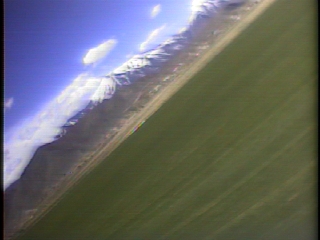

| Optimization criterion | Explanation |

|
Minimizes intra-class variance |

|
Minimizes intra-class variance (guards against singular covariance matrices) |

|
Maximizes inter-class variance |
The following table illustrates the horizon-detection performance for each of the optimization criteria. In each case, we show the flight video with the estimated horizon superimposed, the optimization criterion (top view and side view), and the distribution of sky and ground pixels, given the estimated horizon line. Note that J3 appears to be more robust than either J1 or J2.